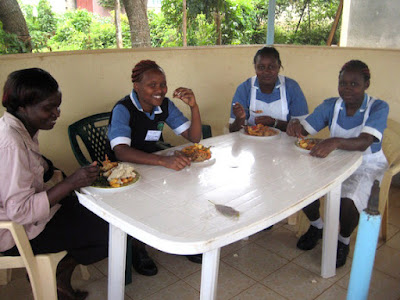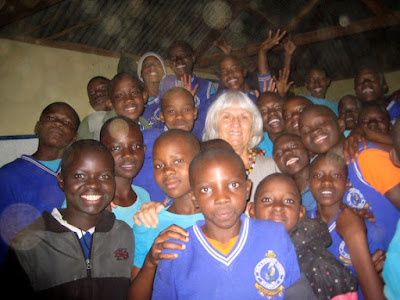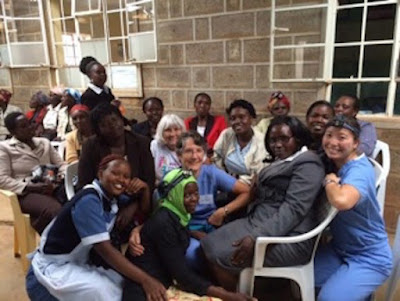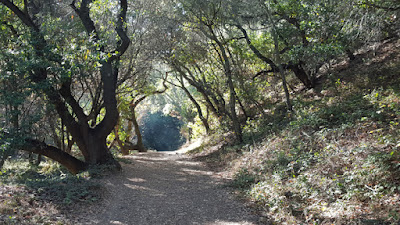 |
| Muhoroni, Kenya. Gretchen holding a beautiful baby before the mother was
examined. |
Last
month my friend and fellow children’s book writer Gretchen Woelfle flew to
Nairobi, Kenya, and joined a group of volunteer doctors and nurses working with
the organization Preventing Cervical Cancer (PINCC) on a medical mission. Her report on
her experience is below.
 |
| We set up shop in the maternity wing in the second hospital we worked at, in
Muhoroni. |
People have
adopted a solemn tone when asking me about my recent volunteer work in Kenya with
Preventing Cervical Cancer.
They tend to be surprised when I say, “It was really
fun!”
I think they expected “difficult” or “eye-opening” or “inspiring.” But overall,
it was great fun
I traveled to
West Africa several years ago, giving author talks at international schools in
three countries. I’d met many interesting ex-pats, but few Africans.
This time I wanted to connect with the local
people. The PINCC project seemed just the ticket. The fact that we were not a
group of foreign experts coming in and taking over, but training the resident
staff to run their own treatment programs also appealed to me.
 |
| Nursing students at Nyabondo joined us for lunch. |
It was a novelty
for non-medical me to work with a great team of American doctors and nurses for
two weeks in two hospitals in western Kenya. I watched them teach their African
colleagues to screen for cervical cancer and treat abnormal results. I supplied
and checked all the curious bits and pieces they needed each day in the
examination rooms, and I even viewed a few cervixes myself.
But best of all
were my interactions with patients: interviewing the English-speaking women who
came for screening – usually for the first time – and comforting them during
their exams and treatments. With illustrated charts I explained to patients
about HPV (human papillomavirus) and how cervical cancer can be prevented. I
learned the women’s results when I entered the data into our computer.
 |
| Kenyan countryside near Muhoroni |
Getting a
glimpse of Kenyan village life, walking down lanes past small homesteads in the
evenings while attracting a Pied Piper-esque entourage of children, seeing the
local medical staff beam as they received their PINCC certifications to
continue their work after we left – was all part of the fun.
Another delight:
I spent two evenings speaking to several groups of children at the Catholic
compound in Nyabondo, with its hospital, nursing school, two boarding schools,
a day school, and a home for disabled children. Two overflowing classrooms of
girls listened enthusiastically as I talked about my work as a children’s
author.
After I read my latest book,
Mumbet’s Declaration of Independence, about
an 18
th century Massachusetts slave who won her freedom, they had lively
comments and questions.
And I was mobbed
in a most friendly way when I stood among them for a photo op.
The next evening I gave a similar
presentation to a group of ten lovely disabled boys.
 |
Gretchen with schoolgirls at Nyabondo.
"I felt like a celebrity!"
|
Yes, Kenya with
PINCC was eye-opening and inspiring, and occasionally difficult, but the pure
pleasure of the adventure surprised and delighted me.
Note: Preventing Cervical Cancer, a
non-profit in Oakland, California, has been working in Latin America, Africa,
and India since 2005. Volunteers travel to each site three times, six months
apart, after which local staff are certified to conduct their own treatment and
training programs. At present the group
is running projects in Kenya, Ethiopia, and Nicaragua. For more information see
www.pincc.org
 |
At Nyabondo, new friends pause
for a chat and a photo.
|
















